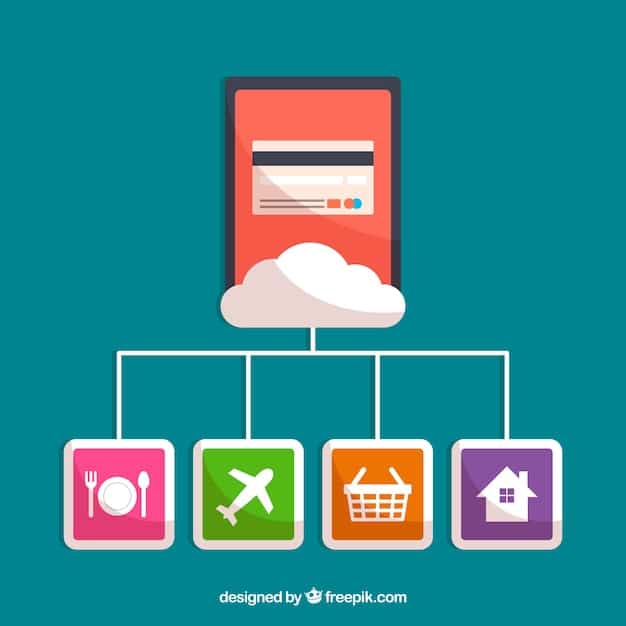E-commerce Migration Checklist: Don’t Lose Your US Customer Data

E-commerce platform migration requires careful planning to avoid data loss; this 7-step checklist helps US businesses protect valuable customer data during the move, addressing potential pitfalls that could lead to losing up to 15% of their customer base.
Planning an e-commerce platform migration can feel overwhelming, especially when considering the potential for data loss. This 7-step checklist will guide you through a secure and efficient migration process, helping you avoid losing valuable customer data from your US customer base.
E-commerce Platform Migration: Why It Matters
Migrating your e-commerce platform is a significant undertaking, often driven by the need for better features, improved scalability, or enhanced security. However, without a solid plan, this transition can lead to data loss, affecting your customer relationships and revenue. It’s projected that companies that don’t take the correct method could lose up to 15% of customer data.
A well-executed migration ensures a seamless experience for your customers, maintains data integrity, and safeguards your business reputation. Let’s delve into the critical steps you need to take.

Step 1: Comprehensive Data Audit and Backup
Before making any changes to your current platform, perform a comprehensive audit of all your data. This includes customer information, product details, order history, and any other relevant business data. Identify what data needs to be migrated and what can be archived.
Next, create a full backup of your entire e-commerce platform. Store this backup in a secure, separate location. This serves as your safety net in case anything goes wrong during the migration process.
Identifying Critical Data Elements
Determining which data elements are critical for your business operations is crucial. Focus on data required for order fulfillment, customer communication, and reporting.
Implementing a Robust Backup Strategy
Your backup strategy should include regular backups, secure storage, and a tested recovery process. This ensures that your data is always protected and accessible.
- 🛡️ Regularly back up your entire e-commerce platform.
- ☁️ Store backups in a secure, cloud-based location.
- ✅ Test your data recovery process to ensure its effectiveness.
By taking these initial steps, you minimize risk and prepare for a smooth migration.
Step 2: Choose the Right E-commerce Platform
Selecting the right e-commerce platform is a pivotal decision that significantly impacts your online business. Consider your business needs, scalability requirements, and budget when evaluating different platforms.
Research various platforms and compare their features, pricing, and support options. Ensure the chosen platform aligns with your long-term goals and offers the necessary tools for growth.
Evaluating Platform Features and Scalability
Assess the features offered by each platform, such as inventory management, marketing tools, and payment gateway integrations. Ensure the platform can scale with your business as it grows.
Considering Third-Party Integrations
Check the availability of integrations with other tools you use, such as CRM systems, email marketing platforms, and analytics tools. Seamless integration can streamline your operations and improve efficiency.
- 🛍️ Evaluate platforms’ scalability for future growth.
- 🤝 Check for seamless integration with third-party tools.
- 💰 Consider the total cost of ownership (TCO) of each platform.
Choosing the right platform will set the stage for a successful migration and future growth.
Step 3: Develop a Detailed Migration Plan
A well-defined migration plan is essential for a successful transition. This plan should outline every step of the migration process, including timelines, responsibilities, and potential risks.
Consider a phased approach to minimize disruption and allow for thorough testing at each stage. Communicate the plan to all stakeholders and ensure everyone understands their roles.
Defining Timelines and Responsibilities
Clearly define the start and end dates for each phase of the migration. Assign responsibilities to team members and ensure they have the necessary resources.
Phased Approach for Minimal Disruption
Implement a phased approach, starting with a small subset of data and gradually migrating the rest. This allows you to identify and address any issues before they impact the entire system.
A well-thought-out plan will minimize risks and ensure a smooth execution.
Step 4: Data Cleansing and Transformation
Before migrating your data, take the time to cleanse and transform it. This involves removing duplicate records, correcting errors, and standardizing data formats. Clean data ensures accuracy and consistency on the new platform.
Transforming your data may involve mapping fields from the old platform to the new one. Ensure that all data is properly formatted and compatible with the new platform.

Removing Duplicate and Inaccurate Data
Identify and remove duplicate records to improve data accuracy. Correct any errors or inconsistencies to ensure reliable data on the new platform.
Data Mapping and Compatibility
Map fields from the old platform to the new one to ensure proper data transfer. Verify that all data is compatible with the new platform’s requirements.
- ✨ Remove duplicates to improve data accuracy.
- 🛠️ Correct errors and inconsistencies in your dataset.
- 🗺️ Map fields accurately to ensure proper data transfer.
Clean and transformed data will lead to a more efficient and reliable e-commerce operation.
Step 5: Test the Migration Process Thoroughly
Testing is a crucial step to ensure a successful migration. Create a test environment that mirrors your production environment and run several test migrations. Verify that all data is transferred correctly and that all functionalities are working as expected.
Involve different team members in the testing process to get diverse perspectives. Document all test results and address any issues before proceeding to the next stage.
Creating a Test Environment
Set up a test environment with a copy of your data to simulate the migration process. This environment should be isolated from your live system to prevent any disruptions.
Performing Multiple Test Migrations
Conduct multiple test migrations to identify and resolve any issues. Test different scenarios and data subsets to ensure comprehensive coverage.
- 🧪 Create a test environment mirroring your production setup.
- 🔍 Conduct multiple test migrations with varied data.
- 📝 Document all test results and fix identified issues.
Thorough testing will help you catch and resolve any issues before they impact your live system.
Step 6: Execute the Migration and Monitor Closely
Once you’re confident with the test results, it’s time to execute the actual migration. Schedule the migration during off-peak hours to minimize disruption to your customers. Monitor the process closely to identify and address any issues that arise.
Communicate with your customers about the migration, informing them of any potential downtime and expected improvements. Keep them updated on the progress and address any concerns they may have.
Scheduling Migration During Off-Peak Hours
Schedule the migration during periods of low traffic to minimize disruption to your customers. This ensures a smoother experience and reduces the impact on sales.
Real-Time Monitoring and Issue Resolution
Monitor the migration process in real-time to identify and address any issues promptly. Have a team ready to resolve any technical problems that may arise.
- 🕒 Schedule migration during off-peak times.
- 👁️ Monitor the migration process in real-time.
- 📢 Keep customers informed about the migration.
Careful execution and monitoring will ensure a smooth and successful migration.
Step 7: Post-Migration Review and Optimization
After the migration is complete, conduct a thorough review to ensure everything is working as expected. Verify that all data has been transferred correctly, and all functionalities are operational.
Monitor the performance of the new platform and optimize it for speed and efficiency. Gather feedback from users and address any issues they may encounter.
Verifying Data Integrity and Functionality
Confirm that all data has been migrated correctly and that all functionalities are working as expected. Address any discrepancies or issues promptly.
Performance Monitoring and Optimization
Monitor the performance of the new platform and optimize it for speed and efficiency. Improve user experience and drive more sales.
- ✔️ Verify data integrity post-migration.
- 🚀 Optimize the new platform for speed and efficiency.
- 👂 Gather and address user feedback.
A post-migration review and optimization will ensure that your new platform performs optimally and meets your business needs.
| Key Point | Brief Description |
|---|---|
| 🛡️ Data Audit & Backup | Comprehensive review and secure backup before migration. |
| ✨ Data Cleansing | Remove duplicate and inaccurate data for consistency. |
| 🧪 Test Migration | Thorough testing to identify and fix migration issues. |
| 🚀 Optimization | Post-migration performance monitoring and optimization. |
FAQ
▼
Data migration ensures all your important customer and product information is safely moved to your new e-commerce platform. It’s essential for maintaining business continuity and offering uninterrupted service to your customers.
▼
You should back up everything, including customer data, product information, order history, and any custom configurations. A complete backup ensures you can restore your business if something goes wrong during the migration.
▼
Test the migration process as many times as necessary until you achieve a result that is error-free. Every test helps to identify and rectify issues, which should lead to a smoother live migration.
▼
Downtime can be minimized by performing the migration during off-peak hours and keeping your customers informed. Phased migrations, where only some data is migrated at a time, are beneficial, too.
▼
Confirm that all data has been moved properly, everything is working accurately, and monitor platforms once you have migrated. Make adjustments to speed and efficiency, and most importantly, act on every bit of user response.
Conclusion
By following this 7-step checklist, you can confidently navigate your e-commerce platform migration, protect your valuable customer data, and ensure a seamless transition for your business. Proper planning and execution are key to maintaining business continuity and fostering long-term success in the competitive e-commerce landscape.





